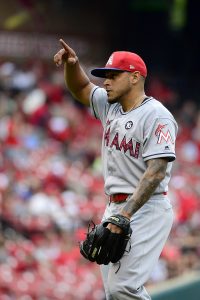The Marlins informed reporters this afternoon that left-hander Sean Guenther underwent Tommy John surgery yesterday (via Jordan McPherson of the Miami Herald). That’ll obviously keep him out for the entire season, and it seems likely he’ll miss a good portion of the 2023 campaign.
It’s a difficult blow for Guenther, albeit not all that unexpected. It was reported last week the southpaw was dealing with an arm issue which may require surgery. Miami had already placed him on the 60-day injured list, so there won’t be any forthcoming transaction now that he’s gone under the knife.
Guenther, 26, reached the big leagues for the first time last season. He made 14 appearances and worked 20 1/3 innings, struggling to a 9.30 ERA. Guenther didn’t miss many bats in the majors, but he induced grounders at a decent 47.2% clip. He also posted some excellent strikeout and walk numbers with Triple-A Jacksonville, where he punched out 30.1% of batters faced and only walked 4.3% of opponents.
While he won’t pitch in 2022, Guenther will receive major league pay and service time for his time on the IL. The Marlins will have to add him back to the 40-man roster at the start of next offseason.

